
Twice I have posted previews of books. This was the subject of the first one back in 2013. The second came along in 2015, and I believe it was posted with the hope of boosting a Kickstarter campaign to publish the previewed book. I’m not quite sure why the first preview was posted. Maybe I just felt an overwhelming urge to write something. It does happen. Whatever the reason, I was obviously quite impressed with the This American Life episode where I first learned of Andrew Forsthoefel and his recently completed walk, and I really expected the book to appear shortly. It did not.
In a paragraph at the end of the second book preview, I reported that I was still following Forsthoefel’s blog and there was still hope for the book but that my confidence was weakening. I eventually stopped following the blog and missed the book’s publication a couple of years later. A recent Amazon Associates change (They dropped support for links to images.) had me revisiting all of my reviews and making changes to many. That Walking to Listen preview required no changes but looking it over jogged some memories and I learned that the book had been published — about seven years ago — and was now available.
The recently completed walk that caught my interest back in 2013 was 4,000 miles long and had taken nearly a year. The book documents the journey in the tradition of John Steinbeck’s Travels with Charley and William Least Heat-Moon’s Blue Highways which means it is much more about people and experiences than places. Of course traveling by vehicle, as Steinbeck and Heat-Moon did, is a lot different than walking, which Forsthoefel did. There is a third book I often thought about while reading Walking to Listen. Ten Million Steps on Route 6 is the story of Joe Hurley’s walk across America. That’s closer to Forsthoefel’s experience but Hurley had a chase car that picked him up at the end of each day while Forsthoefel often slept right where he stopped walking in a tent he carried.
“WALKING TO LISTEN” was written on a small sign that Forsthoefel carried. It was a visual aid when explaining what he was doing. I suspect it gave more of a sense of mission to his walk than simply speaking the words would have. Maybe it made people less reluctant to speak into the small recorder that Forsthoefel used in interviews. Being twenty-three and fresh out of college probably helped too. The bulk of Walking to Listen consists of Forsthoefel telling his story in his own words although he does use some quotes from interviews in the telling. But every chapter is preceded by a verbatim transcript of a portion of one of those interviews. The person or persons speaking is identified along with the location and approximate date and the transcript follows. Some are very short excerpts. None are longer than a couple of pages but they do add a little “live-action” to the well-crafted retellings that fill most of the pages.
The “fresh out of college” situation I mentioned is one of the reasons for the walk. Graduation is sometimes seen as a time to access things before making the next commitment and so it was for Forsthoefel. He frequently referred to life after college as “coming of age”. He really was walking to listen and hoped to hear some advice. But there was another source of uncertainty in his life. His parents’ divorce had surprised him and left him unsure of his relationship with his father. He started the walk hoping to get some help with that too.
Although Forsthoefel wanted mostly to learn something about himself, he couldn’t help but learn something about the world just as the other three writers I’ve mentioned did. Sadly, one of the biggest things he learned in 2012 was the same thing Steinbeck learned in 1962: racism in the U.S. is quite healthy. It is usually more subtle and there might even be a little less but it did not go away during the intervening half century. Forsthoefel happened to be in Selma, Alabama, on Martin Luther King Day. One of the people he spent time with was the city’s African American police chief. Clearly, progress had been made since March of 1965. Yet, on his last morning in town, he runs into a man he had met earlier. There are others with him and at one point he whispers to Forsthoefel, “But some of them are still living in the past, if you know what I mean. So don’t bring up integration. Just play it cool.”
Forsthoefel also learned that generosity, too, is quite healthy. People of all sorts offered help that ranged from a single donut to housing and feeding him for several days. He was grateful for every helping hand, of course, while realizing that some of that help would not have been there had he been anything other than a young white non-threatening male.
The walk can be considered a success I think. Forsthoefel probably didn’t get as much advice on “coming of age” as he hoped but he did get quite a bit and the confidence that comes from walking solo across the country no doubt helped a lot. The relationship with his father also seemed to be in pretty decent shape when the walk ended. At least one person reviewing the book thought too much space was given to these personal issues. I thought they were discussed just enough to provide some understanding of why the walk was happening.
I did not read this book to help with my own coming of age or with parental issues. It’s a little late for both. I read it to get another person’s view of the country and I got that — at three miles an hour.
Walking to Listen: 4,000 Miles Across America, One Story at a Time, Andrew Forsthoefel, Bloomsbury Publishing (2017), 5.5 x 8.15 inches, 400 pages, ISBN 978-1632867018
Available through Amazon.
100th Book Review
Responding to that Amazon change I mentioned involved filtering the list of blog entries and learning I had written 98 book reviews. One more has been published since which makes this the 100th book review published on Denny G’s Road Trips Blog.

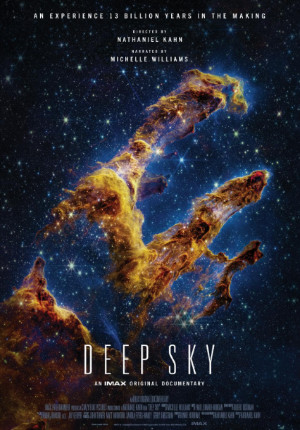 I have not followed every detail of the astounding James Webb Space Telescope’s beginnings but I have been aware of some of the bigger events. I knew when it left Earth atop an Ariane 5 rocket on December 25, 2021, and I listened to reports of its eighteen gold-coated mirrors being unfolded and aligned. I marveled at those first images shared with the world on July 12, 2022. They were impressive on the tiny 6-inch screen on my phone, more so on my compact laptop’s 13-inch screen, and better yet on my small-by-modern-standards 42-inch TV. I need a bigger word than impressive now that I’ve seen some of them on a 72-foot OMNIMAX screen.
I have not followed every detail of the astounding James Webb Space Telescope’s beginnings but I have been aware of some of the bigger events. I knew when it left Earth atop an Ariane 5 rocket on December 25, 2021, and I listened to reports of its eighteen gold-coated mirrors being unfolded and aligned. I marveled at those first images shared with the world on July 12, 2022. They were impressive on the tiny 6-inch screen on my phone, more so on my compact laptop’s 13-inch screen, and better yet on my small-by-modern-standards 42-inch TV. I need a bigger word than impressive now that I’ve seen some of them on a 72-foot OMNIMAX screen.
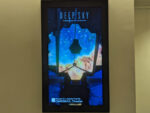
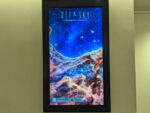
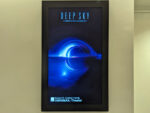
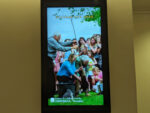
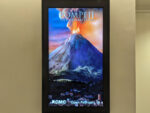
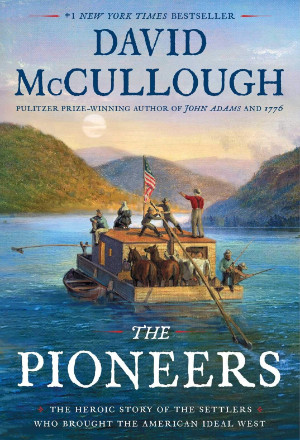
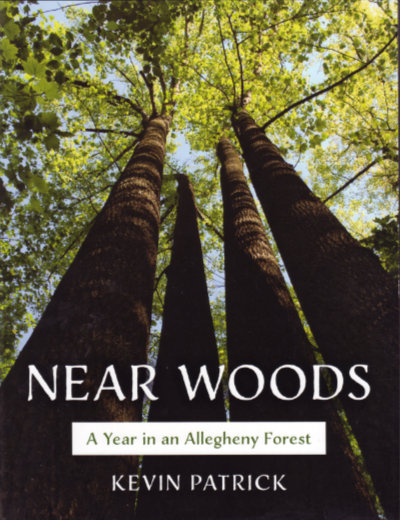 The year Kevin Patrick spent “connecting with White’s Woods” may have been, as a blurb on the back of Near Woods says “In the spirit of Walden” but the resulting products are not the same. Thoreau’s time at Walden Pond was an experiment in self-sufficiency and the book he wrote some years later documented its success. His observations of nature and seasons were generally used to support some aspect of his minimalist lifestyle and not to educate the reader. I suppose some of Patrick’s observations are also made to reinforce some philosophical viewpoint, but he is a lot more subtle and he helps the reader share the raw observation as near as possible. Exactly one-half of this book’s pages are filled with some excellent photographs.
The year Kevin Patrick spent “connecting with White’s Woods” may have been, as a blurb on the back of Near Woods says “In the spirit of Walden” but the resulting products are not the same. Thoreau’s time at Walden Pond was an experiment in self-sufficiency and the book he wrote some years later documented its success. His observations of nature and seasons were generally used to support some aspect of his minimalist lifestyle and not to educate the reader. I suppose some of Patrick’s observations are also made to reinforce some philosophical viewpoint, but he is a lot more subtle and he helps the reader share the raw observation as near as possible. Exactly one-half of this book’s pages are filled with some excellent photographs.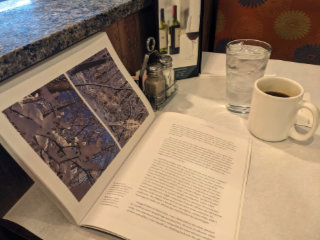 Of course, Near Woods is better looking than either Walden or PrairieErth. To some degree, that’s just something that color photographs do for a book. But these high-quality and well-chosen photos do more than make the book pretty. They are the “raw observations” mentioned in the first paragraph of this article. The book’s design incorporates the photos wonderfully and helps make reading the book a pleasure. Every lefthand page contains one or more photographs. Righthand pages are all text. Captions are in the extra wide inner margins of the text pages. It didn’t take me terribly long to recognize the beauty of this. Every page turn resulted in a new image that could be studied as quickly or slowly as desired before tackling a new page of text.
Of course, Near Woods is better looking than either Walden or PrairieErth. To some degree, that’s just something that color photographs do for a book. But these high-quality and well-chosen photos do more than make the book pretty. They are the “raw observations” mentioned in the first paragraph of this article. The book’s design incorporates the photos wonderfully and helps make reading the book a pleasure. Every lefthand page contains one or more photographs. Righthand pages are all text. Captions are in the extra wide inner margins of the text pages. It didn’t take me terribly long to recognize the beauty of this. Every page turn resulted in a new image that could be studied as quickly or slowly as desired before tackling a new page of text.
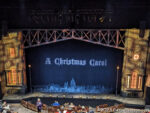
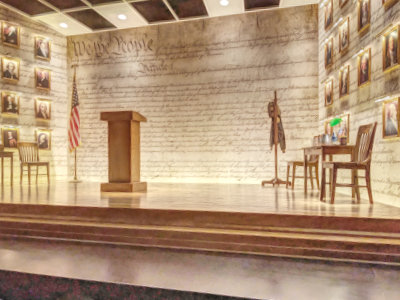
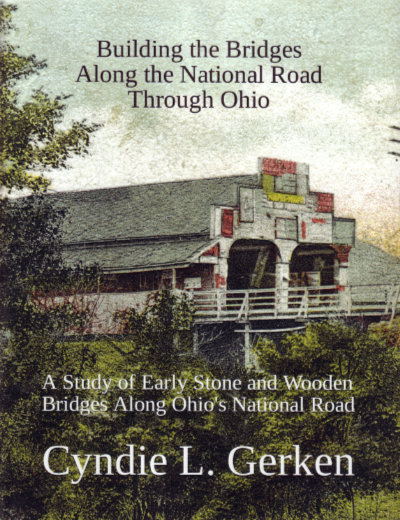 Cyndie’s done it again. As I began to write this review of Cyndie L. Gerken’s fourth book on the National Road in Ohio, I revisited my reviews of the previous three thinking I might come up with a better opening line but everything I saw just reinforced my initial thought. Cyndie has indeed done it again.
Cyndie’s done it again. As I began to write this review of Cyndie L. Gerken’s fourth book on the National Road in Ohio, I revisited my reviews of the previous three thinking I might come up with a better opening line but everything I saw just reinforced my initial thought. Cyndie has indeed done it again.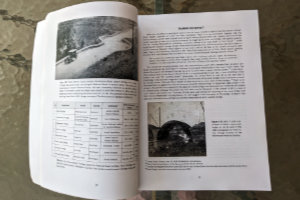 Although I certainly know better, I tend to instinctively think of big stone arches when I hear the phrase “National Road bridges”. One reason is that many of those stone bridges, some of them S-shaped, are still in existence. There were also many wooden bridges along the road but all were much shorter-lived. Building the Bridges… includes both. It identifies twenty-one covered wooden bridges built for the National Road in Ohio in addition to probably forty-some stone bridges. There were also well over a thousand stone culverts and one reason an accurate count of stone bridges is difficult to produce is that not everyone followed the same rules when distinguishing culverts and bridges. Span length was and is the distinguishing characteristic. Twelve feet, twenty feet, and no doubt some other numbers of feet were used to make the distinction and some reports did not distinguish the two at all.
Although I certainly know better, I tend to instinctively think of big stone arches when I hear the phrase “National Road bridges”. One reason is that many of those stone bridges, some of them S-shaped, are still in existence. There were also many wooden bridges along the road but all were much shorter-lived. Building the Bridges… includes both. It identifies twenty-one covered wooden bridges built for the National Road in Ohio in addition to probably forty-some stone bridges. There were also well over a thousand stone culverts and one reason an accurate count of stone bridges is difficult to produce is that not everyone followed the same rules when distinguishing culverts and bridges. Span length was and is the distinguishing characteristic. Twelve feet, twenty feet, and no doubt some other numbers of feet were used to make the distinction and some reports did not distinguish the two at all.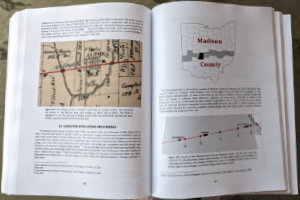 After telling us about as many of the bridge builders as she could identify, Gerken touches on some of the iconic National Road bridges east of Ohio, including the Wheeling Suspension Bridge, before beginning a county-by-county trek across the state. Each county chapter begins with a thumbnail of the county and the National Road through it. A map locating the National Road bridges in the county appears very early in each chapter. Sections on each of the bridges and some of the culverts in the county appear also in east-to-west sequence. Just as some bridges east of Ohio were touched upon preceding the border-to-border coverage, a few in Indiana follow it.
After telling us about as many of the bridge builders as she could identify, Gerken touches on some of the iconic National Road bridges east of Ohio, including the Wheeling Suspension Bridge, before beginning a county-by-county trek across the state. Each county chapter begins with a thumbnail of the county and the National Road through it. A map locating the National Road bridges in the county appears very early in each chapter. Sections on each of the bridges and some of the culverts in the county appear also in east-to-west sequence. Just as some bridges east of Ohio were touched upon preceding the border-to-border coverage, a few in Indiana follow it. 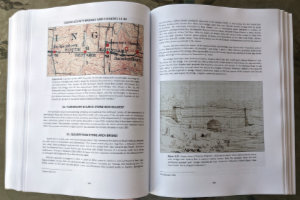 At a minimum, the location of each structure and what it crossed is given. The builder or builders are identified if known and, thanks to some pretty good sleuthing, many of them are. Beyond that, the information given for each bridge or culvert varies widely but it is a natural variation. For unnamed culverts over unnamed intermittent streams, location might be just about the only thing known. For major structures, lots of additional information might be included and usually supported by various graphics. Topographic maps are fairly common and there are lots of historic photographs and drawings. Plenty of modern photos also appear and if a structure is still standing there’s a good chance that the book contains a very modern picture of it taken by the author herself. Stories about events associated with happenings at or near a particular bridge can pop up anytime and are often fleshed out by reproducing contemporary reports.
At a minimum, the location of each structure and what it crossed is given. The builder or builders are identified if known and, thanks to some pretty good sleuthing, many of them are. Beyond that, the information given for each bridge or culvert varies widely but it is a natural variation. For unnamed culverts over unnamed intermittent streams, location might be just about the only thing known. For major structures, lots of additional information might be included and usually supported by various graphics. Topographic maps are fairly common and there are lots of historic photographs and drawings. Plenty of modern photos also appear and if a structure is still standing there’s a good chance that the book contains a very modern picture of it taken by the author herself. Stories about events associated with happenings at or near a particular bridge can pop up anytime and are often fleshed out by reproducing contemporary reports.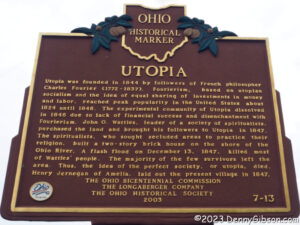
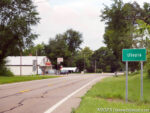
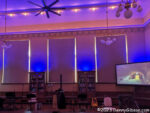
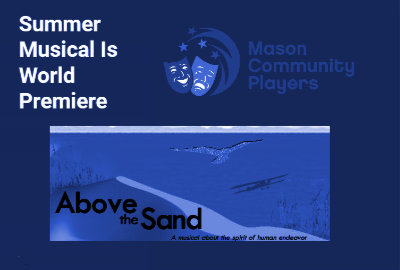 When I wrote about
When I wrote about 
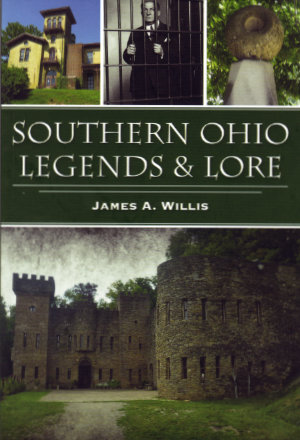
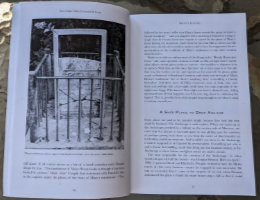 The stories are divided into six sections: “Ghostly Legends”, “Legendary Characters”, “Legendary Villians”, “Legendary Places”, “The Unexplained”, and “Legendary Events”. Having lived my entire life in southern Ohio, I was already at least somewhat familiar with most of them. There are exceptions including all four “Ghostly Legends”. It is the only section where every story is new to me and it is the only section dealing more or less directly with possibly supernatural phenomena. I’m thinking those two facts might very well be related. I’m also thinking that this is the right place to mention that Willis is the founder and director of the paranormal research group The Ghosts of Ohio. I find it somehow reassuring that this is also the only section where that comes into play and even here there is no straying from the “verifiable facts” approach.
The stories are divided into six sections: “Ghostly Legends”, “Legendary Characters”, “Legendary Villians”, “Legendary Places”, “The Unexplained”, and “Legendary Events”. Having lived my entire life in southern Ohio, I was already at least somewhat familiar with most of them. There are exceptions including all four “Ghostly Legends”. It is the only section where every story is new to me and it is the only section dealing more or less directly with possibly supernatural phenomena. I’m thinking those two facts might very well be related. I’m also thinking that this is the right place to mention that Willis is the founder and director of the paranormal research group The Ghosts of Ohio. I find it somehow reassuring that this is also the only section where that comes into play and even here there is no straying from the “verifiable facts” approach.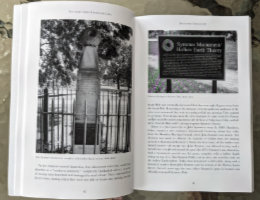 I don’t believe I learned anything new about any of the “Legendary Characters” but I appreciate the concise and complete descriptions. Willis’ reporting on John Symmes and his hollow earth theory is among the most even-handed and comprehensive I’ve read. Likewise, his tale of “Legendary Villian” George Remus where I did learn a few details for the first time.
I don’t believe I learned anything new about any of the “Legendary Characters” but I appreciate the concise and complete descriptions. Willis’ reporting on John Symmes and his hollow earth theory is among the most even-handed and comprehensive I’ve read. Likewise, his tale of “Legendary Villian” George Remus where I did learn a few details for the first time.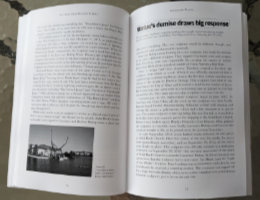 “Legendary Places” combines a place I had never heard of (Athens Pentagram) with three that I am quite familiar with. That somehow makes it my favorite section. One of the three familiar places, the Loveland Castle, was the subject of a blog post here
“Legendary Places” combines a place I had never heard of (Athens Pentagram) with three that I am quite familiar with. That somehow makes it my favorite section. One of the three familiar places, the Loveland Castle, was the subject of a blog post here